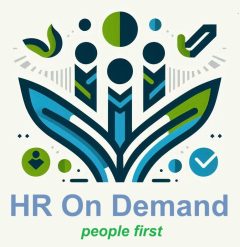Compliance Tools
Compliance Tools: Ensuring Regulatory Confidence
Navigating regulatory compliance can be complex and time-consuming for businesses of any size. Compliance tools simplify these processes, helping organizations adhere to labor laws, maintain accurate records, and mitigate risks. For small and medium-sized businesses, leveraging the right tools ensures smooth operations and safeguards against costly penalties. Below, we explore common compliance challenges and effective tools to address them.

1. The Importance of Compliance Tools
Compliance tools are designed to help businesses stay up-to-date with evolving regulations while automating critical HR processes.
Why Compliance Tools Matter:
- Ensure adherence to federal, state, and local labor laws.
- Reduce the risk of penalties from non-compliance.
- Automate routine processes, saving time and effort.
- Provide a centralized repository for compliance-related documents and data.
2. Common Compliance Challenges
Staying compliant can be particularly challenging for small and medium-sized businesses due to limited resources or expertise.
| Challenge | Impact |
|---|---|
| Keeping Up with Regulations | Frequent changes make compliance difficult to track. |
| Accurate Record-Keeping | Non-compliance due to missing or outdated documentation. |
| Reporting Requirements | Errors in compliance reporting can lead to penalties. |
| Employee Misclassification | Missteps can result in fines or legal action. |
Solutions:
- Use tools that provide alerts for regulation changes.
- Automate record-keeping and reporting processes.
- Access legal guidance via software platforms or legal experts.
3. Essential Compliance Tools for HR
The right compliance tools empower businesses to simplify and streamline their regulatory processes.
| Type of Tool | Examples | Purpose |
|---|---|---|
| Compliance Management | Navex Global, i-Sight | Track and report compliance activities. |
| Employee Classification | Justworks, Gusto | Ensure proper worker classification. |
| Policy Management | PolicyTech, Convercent | Create, distribute, and update policies. |
| Record-Keeping Solutions | BambooHR, Zenefits | Maintain compliant personnel records. |
| E-Signature Platforms | DocuSign, Adobe Sign | Simplify document authorization processes. |
4. Best Practices for Using Compliance Tools
To maximize the benefits of compliance tools, businesses must integrate them strategically into their processes.
Actionable Tips:
- Evaluate Organizational Needs:
- Identify which areas of compliance (e.g., payroll, safety, benefits) are most critical for your business.
- Choose tools that align with your specific industry or regulatory requirements.
- Centralize Documentation:
- Store compliance data and policies in one secure, accessible location.
- Use platforms with role-based access to protect sensitive information.
- Stay Proactive with Updates:
- Set up alerts for regulatory changes to ensure tools and processes are always current.
- Provide training for HR staff on how to effectively use compliance software.
5. Measuring Compliance Success
To ensure your compliance tools are effective, regularly assess their impact using key performance metrics.
| Metric | Purpose |
|---|---|
| Audit Success Rate | Monitor how often your business passes audits. |
| Time Spent on Compliance Tasks | Measure efficiency improvements with new tools. |
| Number of Policy Updates | Track the frequency of keeping policies current. |
6. Preparing for Future Compliance Challenges
The compliance landscape is constantly evolving. HR must stay prepared to adapt tools and strategies as necessary.
Emerging Trends:
- AI-Powered Compliance Monitoring: Detect potential compliance violations in real time.
- Data Privacy Tools: Meet GDPR, CCPA, and other global data protection regulations.
- Blockchain for Record-Keeping: Securely manage and verify compliance documents.
- Mobile-First Tools: Enable compliance management on the go with smartphone-friendly platforms.
